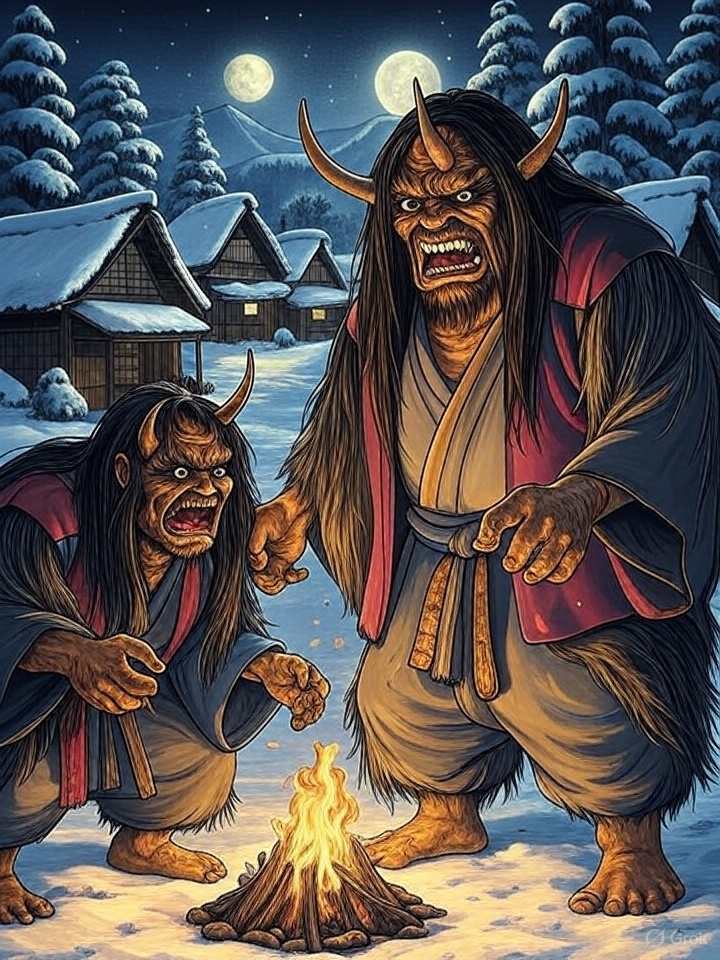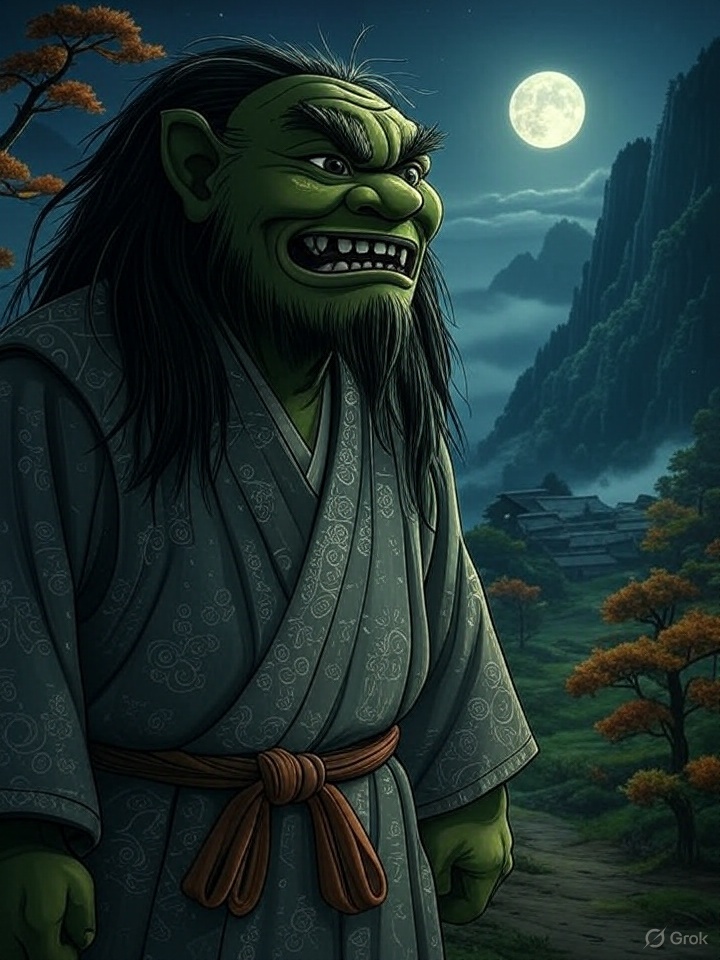Name Meaning
Overview
\n
Namahage (生剥) refers to a traditional ogre figure from northern Japan. The name is derived from the practice of scolding lazy people by saying their blisters will be peeled (namasu).
- Nama (生) = raw/blistered
- Hage (剥) = to peel off
Origin
- Associated with Akita Prefecture, especially the Oga Peninsula.
- Part of traditional New Year’s rituals to ward off laziness and misbehavior.
- Derived from ancient beliefs involving mountain spirits or demons.
Appearance
- Oni-like beings with fearsome masks, wild hair, and straw garments.
- Often carry knives or buckets as part of the performance.
- Costumes vary by village but always invoke awe or fear.
Behavior & Myths
- Visit homes during the New Year shouting “Are there any lazy children?”
- Used to scare children and adults into proper behavior.
- Families prepare to receive them with ritual foods and offerings.
Symbolism
- Embodies discipline, morality, and seasonal renewal.
- Acts as a social tool for reinforcing good conduct.
- Represents a blend of folk religion and community custom.

